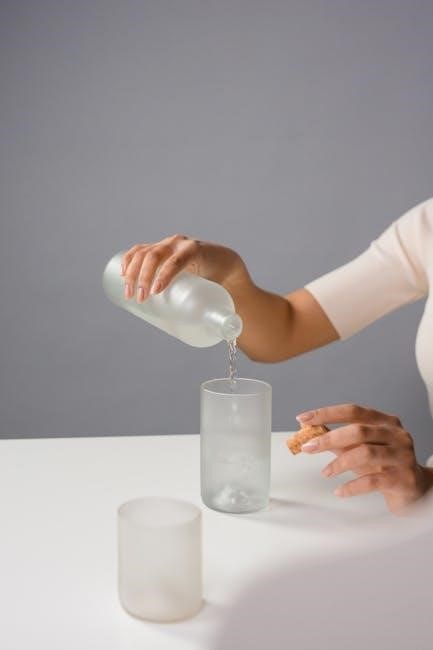The Clack Water Softener is a highly efficient system designed to remove minerals causing water hardness, improving water quality for household use․ It features advanced control valves, easy programming, and durable components, ensuring reliable operation․ This guide provides comprehensive insights into its installation, maintenance, and troubleshooting, helping users optimize performance and extend system lifespan․
Overview of the System
The Clack Water Softener is a state-of-the-art solution for removing hardness minerals from water, ensuring softer water for household needs․ It operates through advanced ion exchange technology, utilizing a control valve to regulate water flow and regeneration cycles․ The system is designed for efficiency, with features like automatic backwashing and rinsing to maintain optimal performance․ Key components include the resin tank, brine tank, and control valve, which work together to soften water effectively․ The softener is compatible with various water conditions and can be customized to address specific hardness levels․ Its compact design and user-friendly interface make it suitable for both residential and light commercial applications․ Regular maintenance ensures long-term reliability and consistent water quality․
Importance of the Owner’s Manual
The owner’s manual is an essential resource for understanding and maintaining your Clack Water Softener․ It serves as a personal tutor, guiding users through installation, programming, and troubleshooting․ The manual provides detailed instructions for setting water hardness levels, salt dosage, and regeneration cycles, ensuring optimal performance․ It also covers maintenance tasks, such as cleaning and replacing parts, to extend the system’s lifespan․ Troubleshooting sections help diagnose and resolve common issues, while advanced settings allow customization for specific water conditions․ Regularly referring to the manual ensures compliance with best practices and manufacturer recommendations․ By following the guidelines, users can maximize the system’s efficiency and enjoy consistent access to softened water․ The manual is a critical tool for both new and experienced users․

Key Features and Components
The Clack Water Softener includes a high-performance control valve, durable resin tank, brine system, and advanced programming options․ These components ensure efficient water softening․
Understanding the Control Valve
The Clack control valve is the heart of the water softener system, managing water flow and regeneration cycles․ It features multiple stages, including backwash, rinse, and downflow brine, ensuring optimal performance․ Programmable settings allow customization of water hardness levels and salt dosage․ The valve’s advanced design supports various operating modes, making it adaptable to different water conditions․ Regular maintenance and proper programming are essential to maximize efficiency and extend the valve’s lifespan․ By understanding and configuring the control valve correctly, users can achieve perfectly softened water tailored to their needs․ This component is crucial for the overall functionality and efficiency of the Clack Water Softener system․
Components Overview
The Clack Water Softener system consists of several essential components designed to work together for effective water softening․ The resin tank houses the ion exchange resin, which removes hardness-causing minerals from the water․ The brine tank stores the salt solution necessary for regenerating the resin․ A bypass valve allows users to switch between softened and unsoftened water, useful for maintenance or emergencies․ The control valve manages water flow and regeneration cycles, ensuring efficient operation․ Additional components include the drain line and tubing, which connect the system parts and facilitate water flow․ These components collaborate to deliver softened water, improving both household comfort and plumbing longevity․ Proper understanding and maintenance of these parts are vital for optimal system performance․
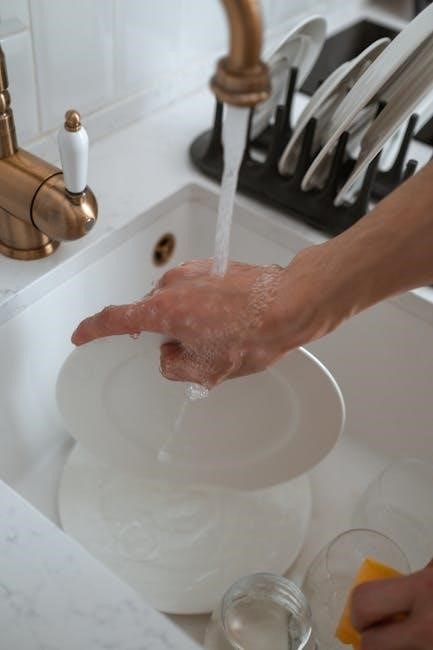
Installation Guide

The Clack Water Softener installation process is designed for simplicity, requiring basic plumbing skills and tools like wrenches, tubing, and drain line connections for setup․
Pre-Installation Planning
Before installing the Clack Water Softener, assess the installation location to ensure proper spacing and accessibility․ Check water supply lines, electrical connections, and drainage options․ Determine the ideal placement for the softener and brine tank, ensuring they are level and secure․ Measure and mark the area to avoid obstructions․ Verify the water hardness levels to configure the system correctly․ Familiarize yourself with local plumbing codes and regulations․ Gather all necessary tools and materials, such as wrenches, tubing, and fittings․ Plan for a bypass valve installation to facilitate future maintenance․ Ensure the power source is nearby and protected from water exposure․ Proper pre-installation planning ensures a smooth and efficient setup process, minimizing potential issues during operation․
Step-by-Step Installation
Begin by turning off the main water supply and draining the lines to prevent water flow during installation․ Connect the inlet and outlet valves to the water supply lines, ensuring proper directional flow․ Position the brine tank next to the softener unit and secure it to prevent tipping․ Install the drain line, making sure it slopes downward to facilitate proper backwash drainage․ Connect the system to a nearby power source and program the control valve according to the water hardness levels․ Follow the manufacturer’s guidelines for tightening connections and ensuring all components are securely fastened․ Finally, test the system by running a manual regeneration cycle to verify proper function and check for leaks․ Proper installation ensures optimal performance and longevity of the Clack Water Softener․
Connecting System Components
To ensure proper functionality, carefully connect all components of the Clack Water Softener․ Begin by attaching the resin tank to the control valve, ensuring a secure and watertight seal․ Next, connect the brine tank to the system, making sure the float assembly is correctly aligned․ Attach the drain line to the control valve and route it to a nearby drain, ensuring it slopes downward for proper backwash flow․ Connect the inlet and outlet valves to the water supply lines, verifying the arrows on the valves align with the water flow direction․ Use Teflon tape on threaded connections to prevent leaks․ Double-check all connections for tightness and ensure no components are loose․ Proper connections are vital for efficient operation and to prevent system damage․ Always refer to the manual for specific fitting requirements․
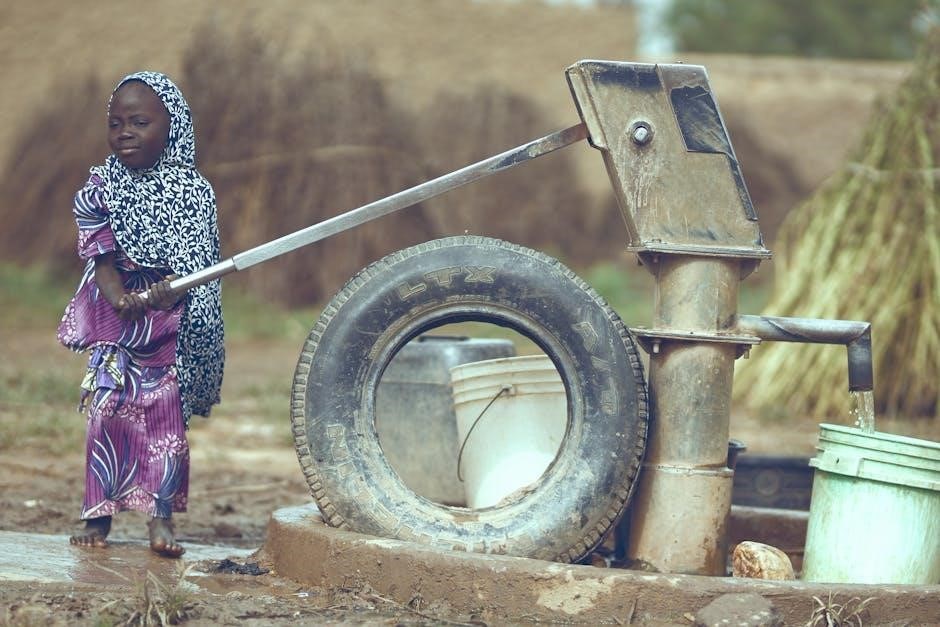
Operating the System
The Clack Water Softener operates automatically, requiring minimal user intervention․ Once installed and programmed, it softens water based on preset settings․ Regularly monitor salt levels and water hardness to ensure optimal performance․ Always follow the owner’s manual for specific operational guidelines․
Programming the Control Valve
Programming the Clack Water Softener’s control valve is straightforward and essential for optimal performance․ Start by navigating the LCD display using the arrow buttons to select your preferred settings․ Key options include water hardness levels, regeneration frequency, and salt dosage․ Enter your water hardness level in grains per gallon (GPG) to ensure accurate softening․ Set the regeneration mode, choosing between time-based or demand-initiated regeneration․ Adjust the salt dosage to match your water usage and preference․ Save your settings to complete the process․ Refer to the owner’s manual for detailed instructions tailored to your specific model․ Proper programming ensures efficient operation and customized water softening․ If unsure, consult the manual or contact customer support for assistance․ Always double-check settings to avoid performance issues․
Understanding Operating Cycles
The Clack Water Softener operates through a series of cycles designed to ensure continuous soft water supply․ The primary cycles include backwash, brine rinse, and regeneration․ The backwash cycle cleans the resin bed by reversing water flow, removing trapped debris․ Next, the brine rinse flushes the system with saltwater to recharge the resin․ Finally, the regeneration cycle replaces hardness-causing minerals with sodium or potassium ions․ These cycles are automated and programmed based on water usage and hardness levels․ Monitoring the cycles helps maintain efficiency and water quality․ Regular operation ensures the system functions optimally, providing softened water consistently․ Understanding these cycles helps users appreciate how the softener delivers clean, soft water reliably․ Proper cycle operation is vital for system longevity and performance․
Setting Water Hardness Levels
Setting the correct water hardness levels is crucial for optimal performance of the Clack Water Softener․ Hardness levels are measured in grains per gallon (gpg) and vary based on your water supply․ To determine your water hardness, use a test kit or consult your water utility report․ Once you have the hardness level, enter it into the control valve․ The system will adjust the amount of salt or potassium used during regeneration to ensure proper softening․ If your water hardness changes, update the settings accordingly․ Accurate hardness levels ensure the softener operates efficiently, prevents over-salinization, and delivers consistently soft water․ Regular monitoring and adjustments maintain system performance and water quality․ This step is essential for maximizing the effectiveness of your Clack Water Softener․
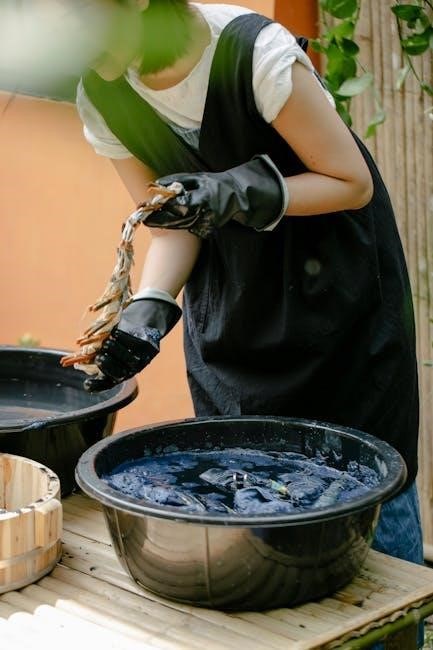
Maintenance and Care
Regular maintenance ensures optimal performance and longevity of your Clack Water Softener․ Check the system periodically, ensure salt levels are adequate, and clean components as needed․
Daily Maintenance Tasks
Regular daily checks ensure your Clack Water Softener operates efficiently․ Monitor salt levels in the brine tank to prevent depletion, as this can cause hard water issues․ Inspect the water softener for visible leaks or damage․ Check the bypass valve to ensure it’s in the correct position․ Test water hardness periodically to confirm the system is functioning properly․ Clean the venturi valve and flow restrictor if you notice reduced water flow․ Additionally, ensure the drain line is clear of obstructions to prevent regeneration issues․ By performing these simple tasks, you can maintain optimal performance, prevent potential problems, and extend the system’s lifespan․ Consistency is key to ensuring soft water quality and system reliability․
Cleaning the System
Regular cleaning is essential to maintain the Clack Water Softener’s performance․ Every 1-2 months, clean the brine tank by dissolving salt bridges and removing debris․ Use a soft brush or scraper to break up hardened salt․ Flush the system by running a manual regeneration cycle to remove dirt and residue․ Clean the venturi valve and flow restrictor with a toothbrush and warm soapy water to ensure proper flow rates․ For the resin tank, perform a resin cleaning cycle if recommended․ Avoid using harsh chemicals, as they can damage components․ Keep the control valve clean by wiping it with a damp cloth․ Regular cleaning prevents mineral buildup and ensures optimal water softening efficiency․ Always refer to the manual for specific cleaning recommendations․
Replacing Parts and Filters
Replacing parts and filters in your Clack Water Softener is crucial for maintaining its efficiency․ The resin beads typically need replacement every 3-5 years, depending on water usage and quality․ The control valve may require replacement every 5-7 years or when showing signs of wear․ Regularly inspect the venturi valve and flow restrictor for mineral buildup and replace them if damaged․ For filters, change the pre- and post-filters every 6-12 months or as recommended․ Always turn off the water supply and drain the system before replacing any component․ Use genuine Clack replacement parts to ensure compatibility and performance․ After replacing parts, flush the system thoroughly to remove debris․ Refer to the manual for specific replacement procedures and guidelines․ Timely replacements will ensure optimal water softening and system longevity․
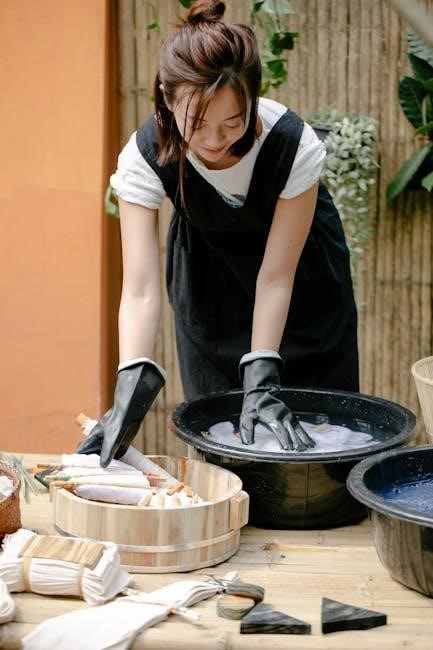
Troubleshooting Common Issues
Common issues with the Clack Water Softener include low water pressure, regeneration problems, or salt bridge formation․ Check system settings, water hardness levels, and filter conditions․
Identifying Common Problems
The Clack Water Softener may encounter issues like low water pressure, excessive salt usage, or inconsistent softening․ These problems often arise from incorrect system settings, salt bridge formation, or improper maintenance․ Users should check for error codes on the control valve, as they provide specific insights into the issue․ For example, low water pressure could indicate a clogged filter or faulty valve, while high salt consumption may signal improper regeneration settings․ Regularly reviewing the system’s performance and adjusting parameters as needed can help prevent these issues․ Always refer to the manual for guidance on diagnosing and resolving specific problems effectively․ Proper troubleshooting ensures optimal system performance and extends the lifespan of the softener․
Understanding Error Codes
The Clack Water Softener uses error codes to indicate specific issues, helping users identify and address problems quickly․ These codes, displayed on the control valve, range from simple alerts like low salt levels to more complex system malfunctions․ For example, an “LC” error may indicate a low salt condition, while “IF” could signal an inlet or outlet flow problem․ Referencing the manual is crucial, as it provides detailed explanations and solutions for each code․ Understanding these codes ensures timely repairs and prevents further damage․ Regular checks and maintenance can often resolve issues before they escalate, keeping the system running efficiently․ Always consult the error code section in the manual for precise guidance and troubleshooting steps․ This ensures optimal performance and longevity of the softener․
DIY Solutions for Fixes
The Clack Water Softener is designed to be user-friendly, allowing homeowners to perform basic repairs and maintenance․ Common issues like clogged venturi valves or stuck float assemblies can often be resolved with simple DIY solutions․ For example, cleaning the venturi valve with a soft brush and soapy water can restore proper flow․ If the system isn’t regenerating, check the salt levels and ensure the brine tank is not empty․ Replacing worn-out seals or gaskets is another DIY task that can prevent leaks․ Always refer to the manual for specific instructions and safety precautions․ While these fixes are manageable, complex problems may require professional assistance․ Regular DIY maintenance ensures smooth operation and extends the system’s lifespan․

Advanced Settings and Customization
The Clack Water Softener offers advanced customization options, allowing users to tailor settings to their specific needs․ Adjust regeneration cycles, salt dosage, and water hardness levels․
Customizing Your System
Customizing your Clack Water Softener allows you to tailor its performance to your household needs․ Adjust water hardness levels, regeneration cycles, and salt dosage to optimize efficiency․ Use the control valve to fine-tune settings based on water usage patterns and preferences․ For example, you can program the system to regenerate more frequently if you have high water demand or less often to conserve salt․ Additionally, customize the system’s operation mode, such as selecting manual or automatic regeneration, depending on your lifestyle․ These adjustments ensure the softener works seamlessly with your water supply, providing consistent results while minimizing maintenance․ Regularly reviewing and updating these settings helps maintain peak performance and extends the system’s lifespan․
Adjusting Salt Dosage
Adjusting the salt dosage in your Clack Water Softener ensures optimal performance and water quality․ The system allows you to fine-tune the amount of salt used during regeneration based on your water hardness levels and household needs․ Excessive salt can lead to higher maintenance costs, while too little may reduce softening efficiency․ To adjust the dosage, access the control valve settings and modify the salt dosage parameter․ Monitor your salt levels and water hardness to determine the ideal dosage․ Regular testing of water hardness after adjustments ensures the system operates efficiently․ Proper salt dosage also prevents over-regeneration, which can waste water and salt․ Always refer to the owner’s manual for specific instructions on adjusting these settings․
Regeneration Settings
Regeneration settings in your Clack Water Softener determine how often and how thoroughly the system cleans itself to maintain water quality․ The control valve allows you to program regeneration cycles based on water usage patterns and hardness levels․ You can choose between manual and automatic modes, with automatic being the most convenient․ The system calculates the optimal regeneration frequency to ensure efficiency․ Adjusting these settings ensures the resin bed is properly cleaned, preventing mineral buildup․ Regular monitoring of water hardness and system performance helps fine-tune regeneration settings․ Properly configured regeneration ensures consistent soft water delivery and extends the system’s lifespan․ Always refer to the owner’s manual for detailed guidance on programming and optimizing regeneration cycles․

and Final Tips
Following the manual ensures optimal performance and water quality․ Regular maintenance and correct settings are crucial for long-term efficiency and effectiveness of your Clack Water Softener․
Best Practices for Optimal Use
For optimal performance, monitor salt levels regularly to ensure consistent water softening․ Schedule routine system checks to catch potential issues early․ Adjust water hardness settings based on your household’s needs to avoid over- or under-treatment․ Clean the control valve periodically to maintain precise water flow and regeneration cycles․ Use high-quality salt designed for water softeners to prevent residue buildup․ Keep the brine tank clean and ensure proper ventilation in the installation area․ By following these practices, you can extend the lifespan of your Clack Water Softener, reduce maintenance costs, and enjoy softer, cleaner water year-round․
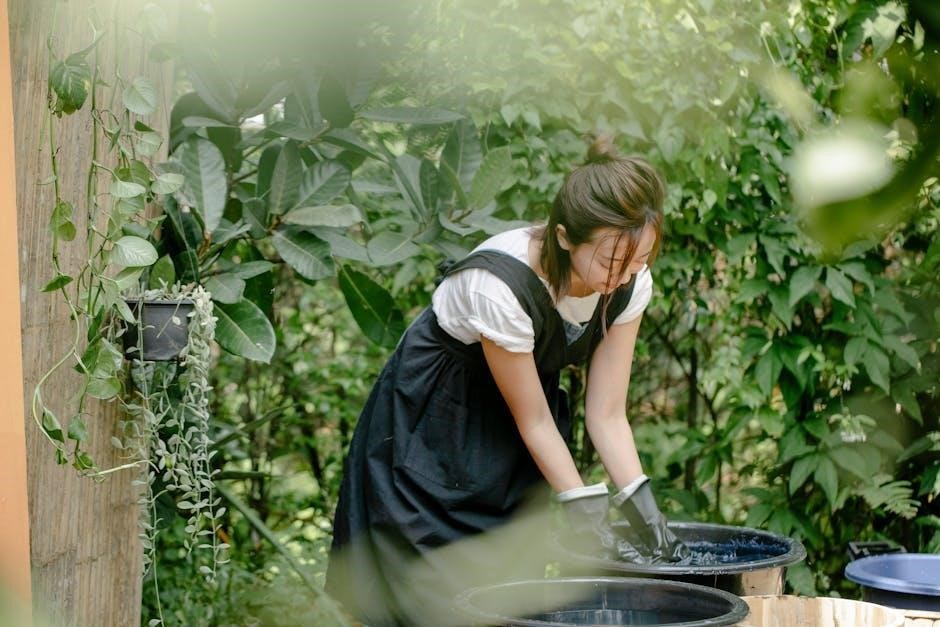
Additional Resources
Explore the official Clack Water Softener website for detailed guides, troubleshooting tips, and downloadable manuals․ Visit trusted plumbing resources for additional insights and support․
Recommended Reading and Links
For further understanding, visit the official Clack Water Softener website, which offers comprehensive guides and downloadable PDF manuals․ Check out trusted resources like Water Quality Products or Water Softener Guide for additional insights․ Explore Clack’s YouTube channel for video tutorials and installation tips․ Refer to Clack’s authorized distributors for genuine parts and accessories․ Additionally, forums like Plumbing Zone or Home Improvement Hub provide user experiences and expert advice․ These resources will help you optimize your system and address any queries effectively․
Customer Support and Assistance
Clack Water Softener provides exceptional customer support to ensure smooth operation and troubleshooting․ Visit their official website for direct access to live chat, contact forms, and phone support․ Call their toll-free number at 1-800-CLACK-WS (1-800-252-2597) or reach international support at +1-309-756-5151․ For email inquiries, contact support@clackcorp․com for general questions or techsupport@clackcorp․com for technical issues․ Their team is available Monday–Friday, 8 AM–5 PM CST․ Clack also offers a detailed FAQ section and troubleshooting guides on their website․ Their dedicated support team is ready to assist with any queries, ensuring your water softener operates at peak performance․
